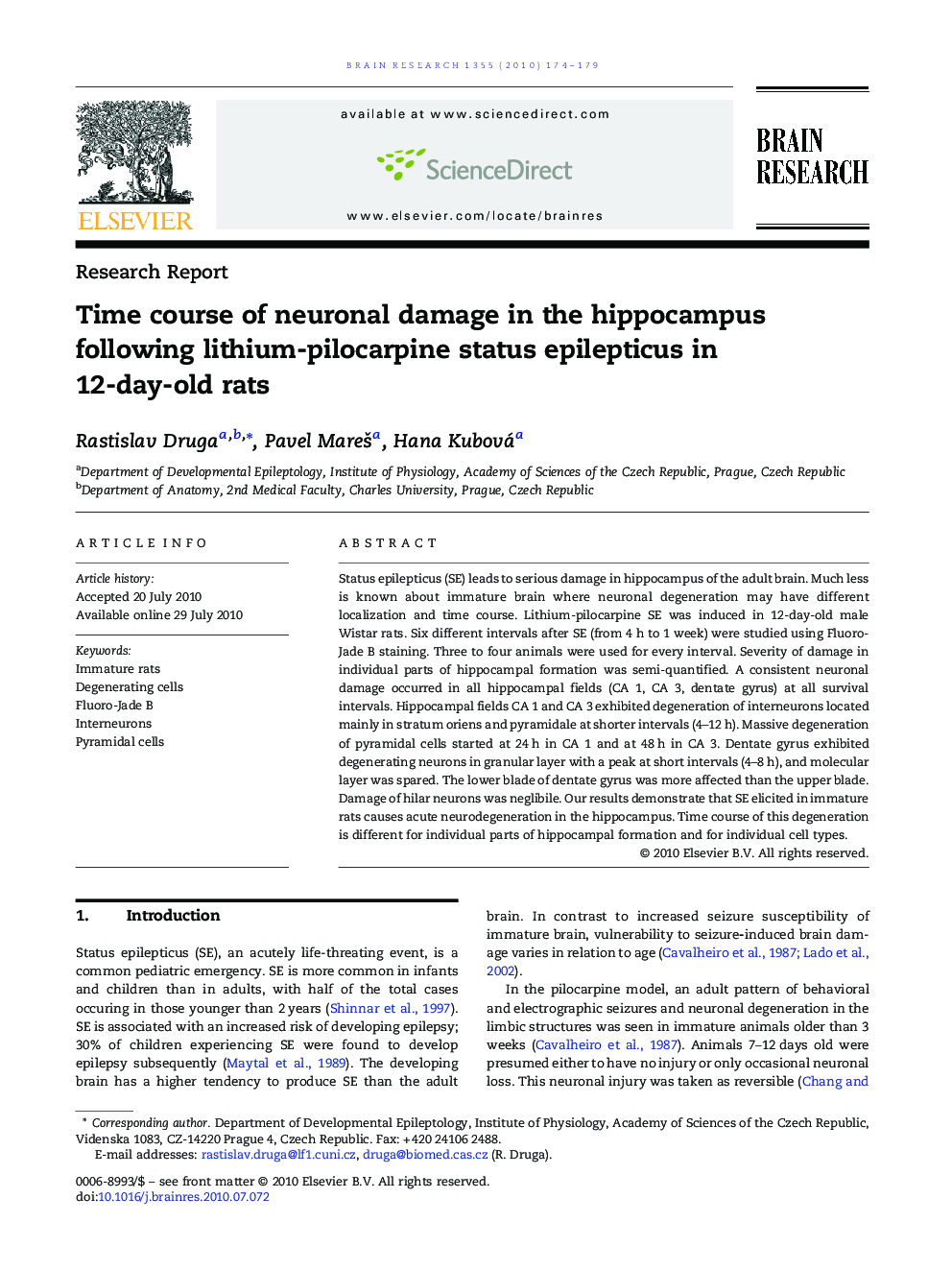| کد مقاله | کد نشریه | سال انتشار | مقاله انگلیسی | نسخه تمام متن |
|---|---|---|---|---|
| 4326497 | 1614084 | 2010 | 6 صفحه PDF | دانلود رایگان |

Status epilepticus (SE) leads to serious damage in hippocampus of the adult brain. Much less is known about immature brain where neuronal degeneration may have different localization and time course. Lithium-pilocarpine SE was induced in 12-day-old male Wistar rats. Six different intervals after SE (from 4 h to 1 week) were studied using Fluoro-Jade B staining. Three to four animals were used for every interval. Severity of damage in individual parts of hippocampal formation was semi-quantified. A consistent neuronal damage occurred in all hippocampal fields (CA 1, CA 3, dentate gyrus) at all survival intervals. Hippocampal fields CA 1 and CA 3 exhibited degeneration of interneurons located mainly in stratum oriens and pyramidale at shorter intervals (4–12 h). Massive degeneration of pyramidal cells started at 24 h in CA 1 and at 48 h in CA 3. Dentate gyrus exhibited degenerating neurons in granular layer with a peak at short intervals (4–8 h), and molecular layer was spared. The lower blade of dentate gyrus was more affected than the upper blade. Damage of hilar neurons was neglibile. Our results demonstrate that SE elicited in immature rats causes acute neurodegeneration in the hippocampus. Time course of this degeneration is different for individual parts of hippocampal formation and for individual cell types.
Research highlights
► SE elicited in 12-day-old rats causes neuronal degeneration in the hippocampus.
► Degeneration was present in stratum oriens and pyramidale of CA1 and CA3 fields.
► Degenerating pyramidal neurons appeared later than degenerating interneurons.
► Granular layer of the lower blade was the most affected part of dentate gyrus.
Journal: Brain Research - Volume 1355, 8 October 2010, Pages 174–179